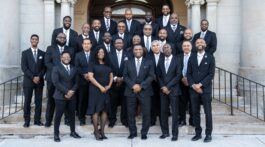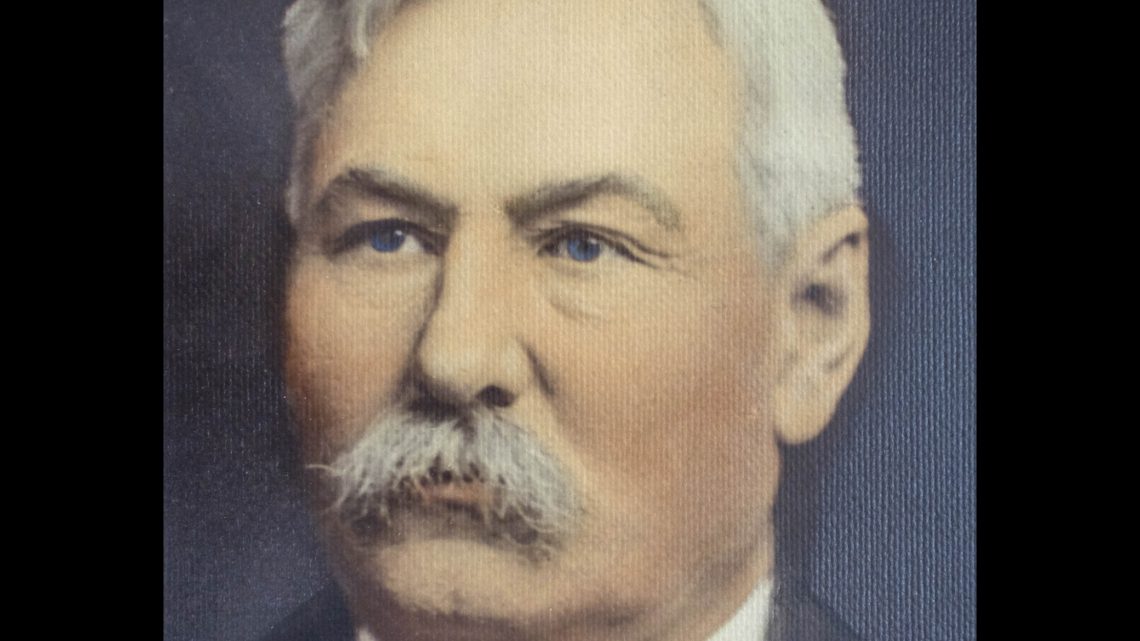This article is the first in a series of five articles on the history of OUTLOOK. To see the other articles in this series, click here.
W. A. Colcord sailed back to the United States in 1902 after preaching the Adventist message in Australia for nine years. Colcord was an important figure in the Adventist Church at the turn of the century. He had become a Seventh-day Adventist as a 24-year-old man in Grand Junction, Iowa, and quickly became an influential pastor in the church. He attended Battle Creek College in Battle Creek, Michigan, and began his pastoral career in 1886 at the age of 26. In 1891 he became General Conference Secretary.
While in Australia Colcord became acquainted with Ellen White, whose nine years in Australia (1891-1900) coincided closely with Colcord’s (1893-1902). After Colcord returned to the United States, he corresponded regularly with Mrs. White. More importantly, though, Colcord was editor of the Australasian Signs of the Times while he preached in Australia.
Creating a new church structure
Colcord arrived back in his home territory of the Midwestern United States to a recently updated Adventist Church structure. The General Conference and local conferences had been created in the 1860s to instill some basic organization in the rapidly growing movement. These functioned well for some time, but there were signs this organizational system was incomplete. The church in 1863 only had 3,500 members, all of whom were in North America, but by 1900 the denomination had spread around the entire world, with dozens of health care facilities, more than 200 schools, and more than 75,000 members.
The church also began to have internal struggles over the amount of power held by the General Conference. General Conference president G. I. Butler controversially stated in the late 1880s that the General Conference “supervision embraces all its interests in every part of the world. There is not an institution among us, not a periodical issued, not a Conference or society, not a mission field connected with our work, that it has not a right to advise and counsel and investigate. It is the highest authority of an earthly character among Seventh-day Adventists.”1
This did not sit well with some church leaders, including Ellen White, who fought to decentralize the power structure of the Adventist Church. White advocated for localized decision-making, saying the church leaders in Battle Creek (where the General Conference was located at the time) could not possibly understand the issues better than those at the locations. “The men at Battle Creek are no more inspired to give unerring advice than are the men in other places, to whom the Lord has entrusted the work in their locality,” argued White.2
In order to handle this rapid expansion and regionalize the power structure of the Adventist Church, the church instituted intermediaries between the General Conference and local conferences. This gave rise to the divisions and unions in place today.
Communicating for the whole union
Only a few months before Colcord arrived back in the United States, the Central and Northern Unions were formed. The Central Union – which was formed April 17, 1902 in Topeka, Kansas – encompassed Missouri, Iowa, Kansas, Nebraska, and Colorado. The Northern Union, which was also formed in April 1902, comprised Minnesota, North Dakota, South Dakota, and Wyoming, United States; and Manitoba, Saskatchewan, and Alberta, Canada (in 1907 the Canadian provinces were restructured into the Western Canadian Union Conference and Iowa Conference was added to the Northern Union Conference).
These changes in church structure meant changes in church communication as well, which is why Colcord’s experience as editor of the Australasian Signs of the Times was significant. The Nebraska Reporter, which was the Nebraska Conference newspaper, and The Practical Educator, the Union College newspaper, were doing their part to communicate church news to their audiences. But in the newly formed Central Union Conference, there was no medium of communication bringing together the constituents of the five states.
Colcord set out to change this by creating a union-wide publication, and on Dec. 16, 1902 the inaugural issue of The Central Advance was published. This forerunner of the modern OUTLOOK was produced biweekly from Lincoln, Nebraska, and was a collaboration between the Central Union Conference and Union College, where it was printed at College View Printing.
The mission of The Central Advance was to “…clearly sound forth warning notes, showing that we are near the close of earth’s long night of sin…” and to “…arouse the people to greater activity in the work of the Master.” Colcord and his staff intended to accomplish this mission by telling the stories of the people within the union’s territory. The first issue went on to state, “In the publication of this paper we desire to better come in touch with our people throughout the Central Union Conference, in order that we may have concerted action in important undertakings for the spread of the truth for these last days, and do with dispatch the work given us to do.”3
Colcord selected an editorial committee to assist him in this endeavor which consisted of Central Union Conference president E. T. Russell, Professor L. A. Hoopes, Dr. Lyra H. George, and Katie Coleman. Elder Russell served on the editorial committee, Professor Hoopes had charge of the paper’s educational department, Dr. George had charge of the paper’s health department, and Miss Coleman had charge of the paper’s missionary department.
Even Ellen White encouraged Colcord in this venture, writing an article for the Jan. 13, 1903 issue of The Central Advance titled “The Influence of Our Publications.” In this article, she stated, “But few realize what can be done in reaching the people by personal, interested efforts in a wise distribution of our publications. Many who will not be induced to listen to the truth presented by the living preacher, will take up a tract or a paper and peruse it; many things they read meet their ideas exactly, and they become interested to read all it contains. Impressions are thus made upon their minds which they cannot readily forget.”4

The first issue of The Central Advance was mailed Dec. 16, 1902. Although this paper only lasted 16 months, it was the forerunner of the modern OUTLOOK, which has – under a few different names – been printed consistently for the last 107 years.
The Central Advance discontinued
Despite all of the work and encouragement, The Central Advance turned out to be a short-lived endeavor, printing its last issue on April 20, 1904, only 16 months after it began. Colcord wrote an article in the final issue titled “The Central Advance Discontinued” in which he announced the decision to cease printing The Central Advance, primarily due to lack of support from local conferences and competition with conference papers. It was decided that The Nebraska Reporter would resume printing and a new Union College periodical named The Union College Messenger would begin printing.
The Central Advance only lasted 16 months, but not because Colcord’s vision was short-sighted or misguided. Colcord saw a way to unite the whole union and encourage the constituents in all parts through the stories of their fellow Adventists. This vision would be taken up by others in the years to come.
In the meantime, Colcord moved on to working as secretary for the Religious Liberty Department of the General Conference, which by then had been moved to Washington, DC. After this, he put his editing skills back to use as book editor for the Review & Herald Publishing House.
Colcord was sometimes rigid and unyielding in his religious views, becoming disillusioned when they became untenable. Around the time he worked at the Review & Herald Publishing House, he chose to withdraw his membership from the Adventist Church. In a 1929 letter from Lewis C. Sheafe, Adventism’s leading black minister of the time, to Colcord, Sheafe criticizes Colcord. “You … set up your standards of infallibility for her [Ellen White’s] writings and what she said from time to time, which she never set up for herself or her writings, and because she did not measure up to those standards which you set up for her, you naturally throw her overboard and try to make her out as a false prophet.”5
Despite leaving the Adventist Church, Colcord did later reconcile his issues with the church and decide to be re-baptized. He passed away at 74 years old in Washington, DC, on Nov. 4, 1935. W. W. Prescott, Adventist administrator and founder of Union College and Avondale College, wrote in Colcord’s obituary in The Advent Review and Sabbath Herald, “…he maintained his peace with God, and fell asleep with full confidence and trust in his Saviour, and a bright hope for the resurrection.”6
Sources
- Knight, George R. “The Role of Union Conferences in Relation to Higher Authorities.” Spectrum Magazine. Oct. 7, 2016.
- White, Ellen G. “Lt. 88, 1896. Prescott, Brother and Sister [W. W.]” Sept. 1, 1896. https://m.egwwritings.org/en/book/5101.2000001#15.
- Russell, E. T. “A Few Words by Way of Introduction,” The Central Advance. Vol. 1 No. 1. Dec. 16, 1902.
- White, Ellen G. “The Influence of Our Publications.” The Central Advance. Vol. 1 No. 3. Jan. 13, 1903.
- Morgan, Douglas. Lewis C. Sheafe: Apostle to Black America. 2010.
- Prescott, W. W., “Asleep in Jesus: W. A. Colcord.” The Advent Review and Sabbath Herald. Vol. 113 No. 1. Jan. 2, 1936.
- Colcord, W. A. “The Central Advance Discontinued.” The Central Advance. Vol. 2 No. 10. April 20, 1904.
- “Report of a Council on the Subject of Melchizidek Held at the Avondale College, Australia.”Adventist Heritage Center: James White Library, Andrews University. 1893.
- Russell, E. T. “The Central Union Conference.” The Central Advance. Vol. 1 No. 1. Dec. 16, 1902.
- Trim, D. J. B. “Adventist Church Growth and Mission Since 1863: An Historical-Statistical Analysis.” Digital Commons at Andrews University. 2012. https://digitalcommons.andrews.edu/cgi/viewcontent.cgi?article=1209&context=jams.
- “The Union College Messenger.” The Central Advance. Vol. 2 No. 10. April 20, 1904.










